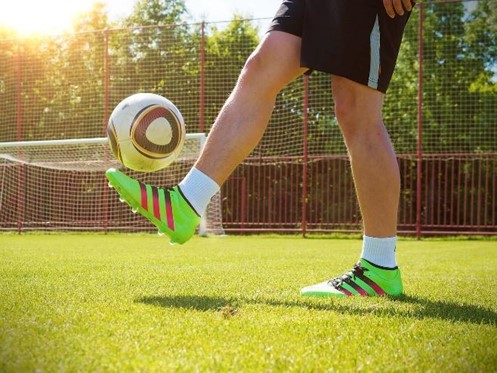One of the key elements of any football training session – or match – is the footwear you choose. Here SoccerKidz, who offer junior soccer coaching in London and Hertfordshire, look at the history of both the football boot and the trainer, how they developed over time – and what you should wear if you are attending one of our courses.
The Football Boot
The idea of wearing something special for playing football first started during the reign of King Henry VIII. The monarch ordering a special pair to be made by his Great Wardrobe (who were responsible for all his clothing) all the way back in 1526.
Although the game has existed in one form or another in the UK since the eighth century, it wasn’t until the 19th century that it became really popular, and the laws of the game were drawn up.
However, in the first half of that century, most players would wear their work boots (with steel toecaps) to play matches, with some adding studs to provide a better grip on muddy or slippery surfaces (the first screw in studs weren’t introduced for another century). It wasn’t until the second half of the 19th century, though, that bespoke football boots began to be manufactured. The leather ran right up to the ankle for added protection, unlike many modern boots.
Throughout the 20th century and into the 21st there have been constant upgrades as manufacturers try to balance lightness and flexibility with the need to protect the feet. Some use rubber rather than leather, while some recent models don’t have laces at all.
The Training Shoe (or Trainer)
Trainers first started to be made in the second half of the 19th century. As with football, people recognised the need for specialised footwear for a range of sports activities – whether that’s outdoor sports (including running and tennis) or indoor sports (such as basketball). This included football trainers, which usually have rubber soles and no studs.
The early trainers were known as sneakers, particularly in the USA. This is because rubber soles meant that wearers didn’t make much noise in them, and they could ‘sneak up’ on other people who wouldn’t hear anyone coming.
Another name for the early sports shoe was the plimsoll – a term which dates from the 1870s. Some sports shoes had coloured horizontal bands joining the upper part to the sole, which resembled the Plimsoll line on a ship’s hull. If water got above the line of the rubber sole, the wearer would get wet feet.
It wasn’t until the 1950s when people began to have more money after the Second World War that the market for trainers really took off, and many people started to wear them as ordinary leisurewear or as a fashion statement and not just for playing sports.
Footwear During a SoccerKidz Session
Players must wear football trainers or normal trainers when playing in our indoor venues, and football boots with studs when outside on the grass. There is no set age group when they should start wearing football boots – so boys and girls can wear them at any age.
As far as what else you should wear for a SoccerKidz training session, check out our previous blog post here. And for a full list of all our current courses, both indoors and outdoors, check out our courses page.
Don’t forget that we also offer children’s football parties in Broxbourne, Enfield, and across Hertfordshire and North London, if you want to make your child’s birthday extra special.
If you have any questions, you can also call us on 07946 260945 or fill in the online contact form here.

